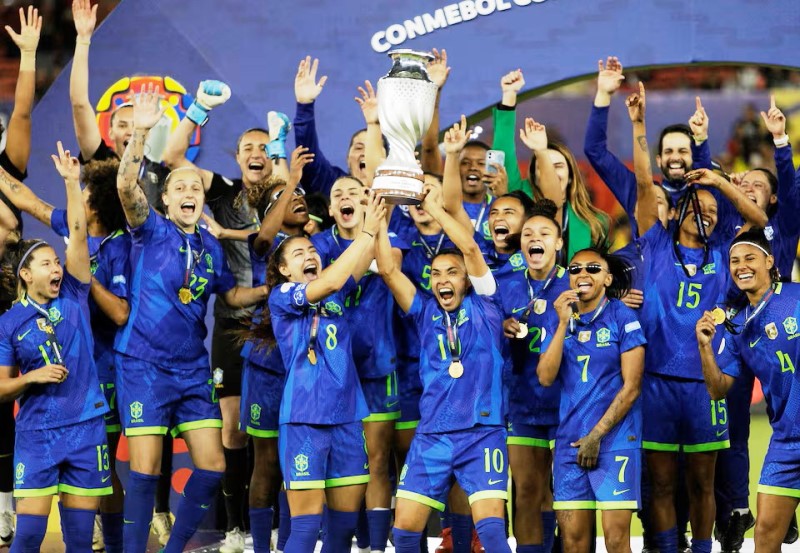Brazil won a breathtaking Women’s Copa América final against Colombia, triumphing 5-4 in a penalty shootout after a pulsating 4-4 draw in Quito. The match, hailed as one of the tournament’s best ever, showcased the rising quality of South American women’s football—but off-field struggles, including poor attendance and logistical issues, underscored the challenges still facing the sport in the region. While the final drew a tournament-high crowd of 23,798, it barely filled half of the 41,575-seat Estadio Rodrigo Paz Delgado, reflecting a wider lack of engagement.
Despite thrilling performances, the event was marred by organizational shortcomings. Teams like Brazil complained about inadequate warm-up facilities, while Chile’s Yanara Aedo criticized the absence of VAR in early rounds as “disrespectful.” Fans and media pointed to a glaring lack of promotion—tickets went on sale just eight days before kickoff, and many locals were unaware the tournament was even happening. “It’s a shame that the stadiums are empty when we have such great football here,” one Ecuadorian attendee told CNN. With tickets priced as low as $5, accessibility wasn’t the issue; the real failure was CONMEBOL’s inability to generate buzz.
While stadiums remained half-empty, international viewership surged. FOX Sports reported a 273% increase in U.S. viewership for the final compared to 2022, with an average of 79,000 viewers per match—a 114% jump overall. The disconnect highlights a missed opportunity: South America has the talent and fan potential, but without better marketing and infrastructure, the region risks falling further behind Europe’s booming women’s game. This year’s Women’s Euros set attendance records, while South America’s premier tournament struggled to fill seats.
The upcoming CONMEBOL Women’s Nations League, starting in October, offers a chance to rectify these issues. With World Cup qualification at stake, the tournament could be a catalyst for growth—if federations invest in promotion and professionalism. Players like Marta and Colombia’s Linda Caicedo have proven the region can compete at the highest level. Now, CONMEBOL must match that ambition off the pitch. Without better planning, investment, and fan engagement, South America’s women’s football revolution risks stalling before it even truly begins.


